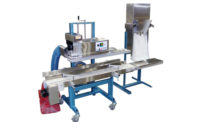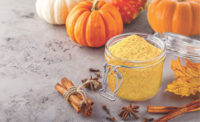Today’s snack and bakery consumers want food products in packaging that offers convenience, reliable functionality and sustained freshness. They’re looking for better-for-you snacks in single-serve portions and resealability. To meet this demand, vendors are providing a variety of convenience options—single-serving, re-sealable, portion-control, on-the-go—that offer benefits for bakery and snack producers.
Convenience is paramount when it comes to snacking, and small single-serve bags provide the ultimate in convenience since they do not require cutlery, meal-planning, refrigeration or clean-up. Also, the number of one-person households is on the rise. Research by GlobalData indicates that by 2020, approximately 414 million people will be living in single-person households globally, making up around 18 percent of total households.
Consumers demand convenient retail-ready packaging because it offers convenience and systematic placement of products on store shelves. Therefore, manufacturers are creating flexible packaging in shapes and sizes that are visually appealing, according to Maria Ferrante, senior director, marketing and communications, PMMI, Reston, VA.
Also, retail-ready packaging helps retailers easily identify food products, making it easier to pull orders from distribution centers. This reduces the likelihood of out-of-stock items and boosts sales 3 percent to 5 percent by lowering out-of-stock inventory for retailers, according to PMMI.
Portable packaging
An emerging trend in snack food products is portable packaging. “Consumers are becoming increasingly aware of the packaging solutions and health benefits of snacks such as nuts, dried fruits and nutritional bars,” Ferrante says. ”There is a significant opportunity to gain market share in the nutritious, portable and easy-to-eat alternative market, particularly in flexible packaging. Thus, many companies are offering easy-open features, such as snap-to-seal tops and press-to-close zippers as convenience factors.”
One of the biggest consumer trends driving the snack food industry is consumer demand for healthier snack options. Growing awareness of the effects of high levels of sugar, fat and salt has increased consumer preference for better-for-you snacks.
This is catalyzing a need for packaging that keeps products fresh and tasty as long as possible, while also making the snack easy to nibble. The convenience of snacks and the demand for packaging that caters to an on-the-go lifestyle continues to create opportunities in the flexible packaging space. “Snacks that require smaller pouches for nuts and dried fruit, nutrition bars and mix-in protein powders facilitate the healthy eating trend and stand to support growth through 2022,” says Ferrante.
Heather Chandler, president, Sealstrip Corp., Gilbertsville, PA, says that some CPG companies have gone to serving-size packaging in a larger package, such as eight individually wrapped items inside a larger bag or box, to promote long-term freshness. A multi-serve package with resealable features offers consumers less waste and extended freshness.
In order to offer convenience, closures need to be durable and easy to use over-and-over again, says Karen K. Reed, marketing and communications director, Kwik Lok Corp., Union Gap, WA. “Otherwise, the closure can break, and the package cannot be reclosed to maintain food freshness. Consumers also want to minimize their impact on the environment. Packaging that allows them to keep their food choices sustainable—from the food itself, to the package—is increasingly more important.”
Industry innovations
Zip-Pak, Carol Stream, IL, offers a variety of convenience-oriented closure options, says Erin Henry, director of marketing and innovation:
- The Pour & Lok easy-pour spout enhances consumer convenience for a range of dry goods in various pouch sizes and formats. A press-to-close, foldable zipper is pre-applied to film in the side gusset of the package for an easy-to-use pour spout. The resealable packaging is available for form/fill/seal (FFS) applications, as well as pre-made bags and pouches.
- A Zip360 option provides easy access to contents with a 360-degree perimeter zipper around the package, which provides easy access to contents. A stand-up format offers neat stocking in-store and convenient storage at home. There also is space for graphics on all sides to provide maximum shelf impact.
- Inno-Lok fast track resealable packaging utilizes pre-zippered film with the ability to run recloseable packaging on many production lines. The packaging meets moisture and oxygen barrier requirements to preserve flavor and freshness. In addition, it is easily implemented onto vertical FFS machines without compromising production speed.
Zip-Pak also offers Sensus resealable closures that offer sensory feedback. The reclosure profile creates a tactile bumping sensation and audible clicking sound when the zipper is opened and resealed. It can be applied to a wide range of flexible packages regardless of pouch size and is especially well suited for FFS machine applications.
Sustainability is another driving force in product development. For example, Kwik Lok recently developed Eco-Lok, a bag closure made with sustainable materials. Used as a closure for food products such as bakery items, it is formulated with a plant-based biopolymer called NuPlastiQ that requires 20 percent fewer greenhouse gas emissions to produce than standard plastic bag closures. “Eco-Lok maintains the qualities of existing Kwik Lok plastic closures: it is printable, reusable and metal detector-compatible,” Reed notes.
Kwik Lok also has teamed up with Matthews Marking Systems, Pittsburgh, to develop a Laser Stitch Technology that offers tamper evidence to ensure food safety along with convenience. “The 909A provides a uniform laser stitch that indicates whether a bag has been opened. Of great importance, bags do not tear when opened and can be easily re-closed with a Kwik Lok closure,” Reed explains. The 909A works on lines of up to 55 bags per minute. It synchronizes with conveyors, requires no compressed air and may be operated on bypass mode to allow the line to run without the laser when needed.
Sealstrip offers a variety of resealable and easy-open packaging solutions. The company’s retrofit applicators work seamlessly with existing wrappers and baggers. “Sealstrip hermetically sealed features use less film than traditional zipper reseals, and maintain the packaging film’s barrier properties for freshness and taste consistency. Tamper evidence helps to prevent waste at the store shelf level, while pressure-sensitive resealability eliminates unwanted air transfer and product spoilage at the consumer level,” says Heather Chandler, president.
“Traditionally 10 to 15 percent of revenue is lost due to food spoilage, and 80 percent of food waste happens at the consumer level,” says Chandler. “By reducing waste, we reduce cost, and the largest demographic of snackers wants convenience that is cost-effective.”
Presto Specialty Products, Appleton, WI, has introduced the Fresh-Lock zipper Style 8113 bag closure, which is designed to maintain freshness, reduce food waste and provide convenience for consumers, along with a sustainable solution for consumer packaged goods. Recyclable and compatible with film sealing systems, the closure was used as part of Kellogg’s Bear Naked Granola sustainable pouch released earlier this year.
Tielman Sweden produces paper baking containers such as cupcake/muffin cups, pie cases and baking molds for the bakery and snack market. “Our raw material is pure natural greaseproof paper with no fluorochemicals added. We are getting more and more inquiries for our products as an alternative to plastic and aluminum,” says Ivana Alilovic, global marketing director. In addition, QR (quick response) codes can be printed right on the paper baking containers so digital information gets forwarded to a company’s webpage or social media channel where consumers can read about ingredients and other brand information.
What near-future advances are on the way in the area of convenience options? Ferrante says the importance of sustainable packaging will continue to be a factor. Some CPG companies that have tested lightweight or recycled materials have had production issues when trying to achieve top speeds, she notes. “As consumer awareness rises, these materials will become more important. Faster and more flexible machines will be developed, driven by increased demand for various sizes and formats.”








